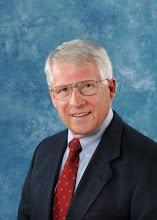In the previous posting, I pointed out that the new reality of constrained resources created by the Great Recession makes the need for a community resilience framework more pressing than ever before. In this post, I’ll discuss another major reason a community resilience framework is needed now: the unrealistic expectations that have resulted from recent disasters.
In the aftermath of 9/11, and especially after Hurricane Katrina, a large portion of the populace seems to believe that the federal government should and can be the “White Knight” that charges in after a disaster and returns the community to normalcy. This belief has been reinforced by recent federal bailouts to financial institutions and automakers, and mirrors some of the rhetoric surrounding the health care debate.
Many current plans for emergency response and recovery reflect other facets of the same problem. For example, too many plans expect that the community’s behavior will conform to directives from the community’s leaders. And yet opinion polls in several locales have shown that large portions of the populace in hurricane-prone areas say they won’t leave no matter what they are told.
Further, plans made before the Great Recession most likely reflect the resources available when they were drawn up, not what the community actually has available to it now or in the near future. As I discussed in my last post, financial resources are likely to be limited for several years. But money isn’t the only constrained resource; the human capital needed for recovery is facing a major turnover. Even before the Great Recession, both the public and private sectors were concerned about how they were going to replace the experience of the Baby Boomers when they retired (in fact, almost 60% of the public sector workforce is likely to retire in the next ten years, while “only” 40% of the private workforce will). As an example, in Charleston, SC, we are now seeing the retirement of the generation who helped Charleston recover so rapidly after Hurricane Hugo. While there are highly capable replacements, in many cases they have not had to cope with the unexpected in real time, under extreme duress and stress. Thus, plans that assume a cadre of experienced leaders may need to be rethought.
Thus, our communities must build a new set of expectations – and a new basis for planning – that reflect the new realities of the Great Recession and the passing of the baton from the Baby Boomers to a new generation of leaders. A community resilience framework can help to accomplish this in several ways:
- It can help a community’s leaders to identify all of the resources actually available, and thus adjust their expectations. The new reality means that communities will have to mobilize much more of the resources available in their own communities – public, non-governmental, and private.
- It can help a community’s leaders communicate their expectations to the public, and to learn what their public’s expectations are. In some cases, this will lead to significant changes in plans. In others, this use of a community framework will mean that individual citizens will see the need to take more responsibility to limit losses.
- As a corollary, the use of a community resilience framework can increase the likelihood that a community’s plans will be more consistent with those of its citizens and businesses, enabling a more efficient and rapid recovery.
- A framework can help new leaders see the entire breadth of their communities, how their communities are structured, and find their place in communication networks.
